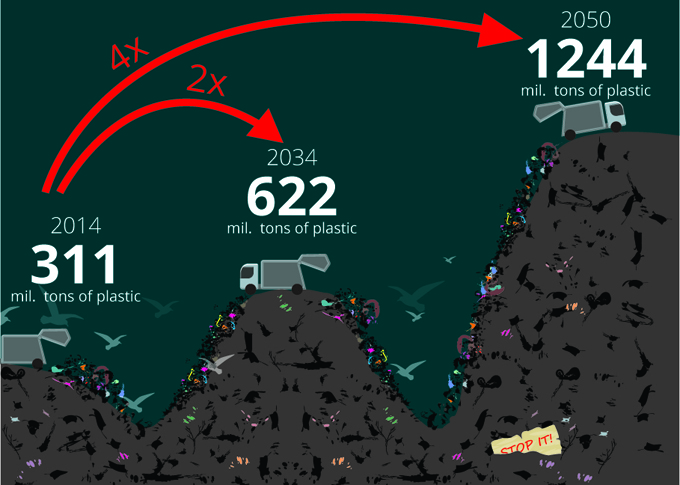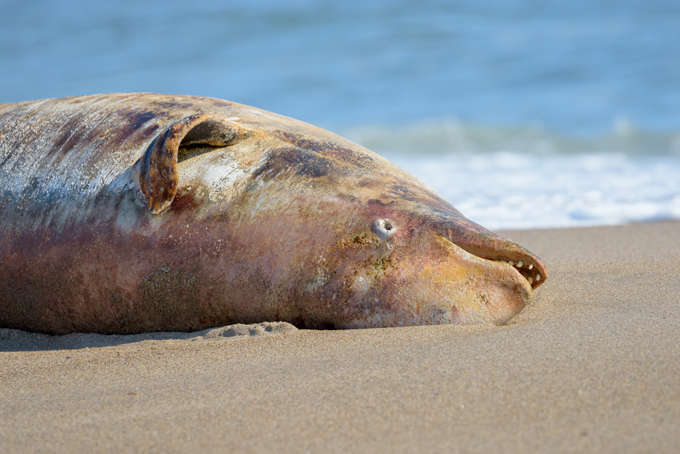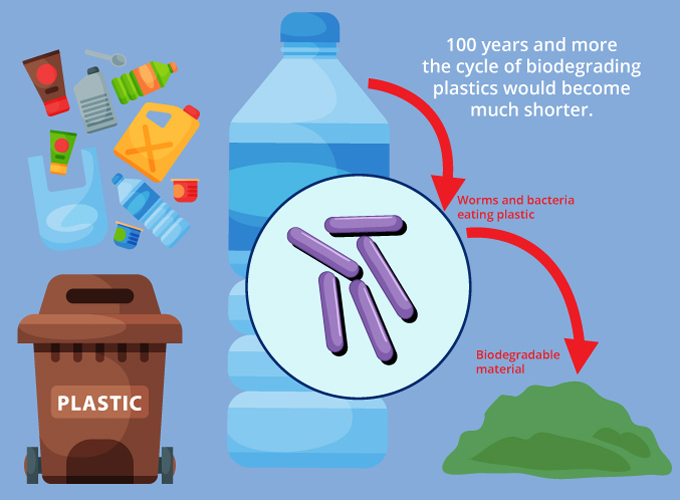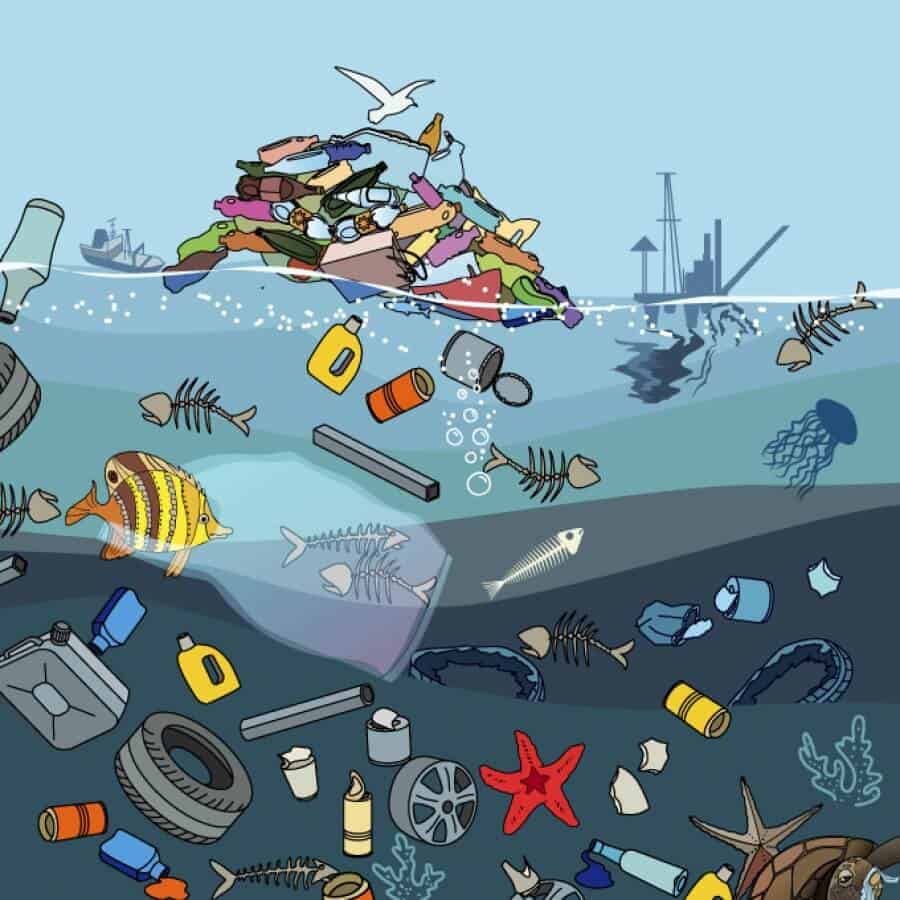According to the World Economic Forum the seas and the oceans are going to contain more plastic waste than fish. This, as early as the year 2050. Additionally, is the waste which goes into landfills. Based on available data, plastic production, as of 2014, was 311 million tones and is expected to double in another 20 years and will be four times as much by the year 2050. Most of this production is ‘consumed’ by the developed world which forms a fraction of the world’s population. If the total figure is divided by the number of people inhabiting our planet, the per capita consumption, comes approximately to a staggering 50 kilos per person and those living in the developing world, consume only a small part of the total production. Take a moment and chew on these numbers.

Increase of plastic production from 2014 until year 2050
Quite mysteriously fish and birds have been committing suicide in masse during the recent years. Some biologists have given the reason as poisonous algae and others have attributed this to cold weather conditions. But algae and cold weather have been around since time immemorial. As we know the massacre of marine life has been leading to a situation where fisher people have to go deeper and deeper into the sea to find fish as the years go by. Combine that with plastic waste being dumped into the seas and a horrendous scenario emerges. The question is, are all the obnoxious wastes being dumped, leading to extremely slow decomposition of inorganic matter in the seas, taking us to colder climes and poison in the algae?

Fish and birds have been committing suicide in masse
Be it clothes, food packaging, engineering…….name it and it’s plastic everywhere. According to available estimates, only five percent of the plastics are recycled, 40 to 45 percent go into landfills and the rest is just thrown into the oceans.
Enter, worms and bacteria. Yoshida and others in his team might have found a bacteria that may come to the aid of humankind. This bacteria loves plastics and is able to break it down to biodegradable material. So instead of taking one hundred years and more the cycle of biodegrading plastics would become much shorter.

Potential solution for dealing with excessive plastic waste
Another experiment conducted by a team of scientists showed a particular kind of larvae could eat plastics and come out with biodegradable material in its place comfortably.
While scientists spend years and years conducting research, once in a while, luck plays a role in pointing you to a study. This appears to have happened in the case of an amateur beekeeper in Spain, Federica Bertocchini who also happens to be a scientist at the Institute of Biomedicine and Biotechnology of Cantabria. As the story goes, Bertocchini while attending to her bee hives found larvae eating into Beeswax. Curiosity aroused, she thought of carrying home these larvae in a plastic bag to study them further. What she thought was a secure way to keep the larvae, turned out to be food for them. In a while, they had eaten their way out of the plastic bag. Thus, has begun a scientific study to see if these larvae can save the planet.
Although, the solution to most problems must begin at the grass root level and ideally production and consumption of plastics must be severely limited through laws that must be passed by our leaders and those who govern us and more importantly through our own sense of responsibility, for the present it seems like it’s going to be bacteria and worms to the rescue.
Photos: Shutterstock / infographics and collage: Martina Advaney
Support us!
All your donations will be used to pay the magazine’s journalists and to support the ongoing costs of maintaining the site.
Share this post
Interested in co-operating with us?
We are open to co-operation from writers and businesses alike. You can reach us on our email at [email protected]/[email protected] and we will get back to you as quick as we can.









